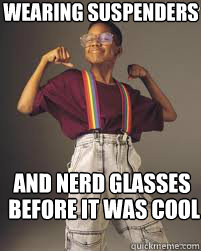Luxottica's target market is simply
anyone who is in need or in want of eyewear or eye care services. In
todays world selling glasses isn't as hard as it used to be. You see,
many years back, glasses were the symbolic reference to your classic nerd or geek. People could have been legally blind and still refused the fact
that they needed to wear those 'geeky glasses'. In todays world, that isn't
so, in fact, it may be the total opposite. People love brands and
the style and exclusivity that comes along with it. Many people who
don't even need glasses or contacts still use them because its now
considered cool.
The eyewear business is in expansion and Luxottica
is capitalizing on that. They spend hundreds of millions in
advertisement across the globe. Towards the end of 2011, CEO Andrea
Guerra, said “In the next few years, the target markets for our
products could increase by more than 2 billion new customers.” He
gives insight into plans for further expansion in different markets
such as Indonesia. In early 2013 Guerra gave note to expansion plans
and an update to the business saying “The start of 2013 has been
particularly positive”, “Vietnam is a new option on our table”.
Analysts are predicting that the company can gain double-digit growth
this year. Luxottica's market share increased 26% in 2012 and the
company has said it has “witnessed a shift in demand for premium
and luxury brands, especially in so-called 'gateway and mega cities'
and high potential channels such as travel, retail, and department
stores.” Guerra
said Luxottica expects to open between 60 to 70 new stores in China
next year after 60 new openings this year. Expansion in different
markets and locations globally calls for new strategy and even though
the target market is mainly the same minor adjustments must be made
specific to each region.
Below, is Andrea Guerra in an interview
hosted by the Wall Street Journal:
Mr.
Guerra: This is a million-dollar question. There are a lot of
similarities between Mediterranean and Asian consumers: They both
want a certain lifestyle, and they're in search of an emotional
relationship with the objects they buy.
U.S.
consumers are more pragmatic. America, compared with Europe, is
always a step more conservative and traditional. Think of the most
legendary sunglasses: They were all born in the U.S.—Ray-Ban and
Oakley for example—but only because of their functional value.
Oakley was perfect for sports, thanks to its technological value,
while Ray-Bans were the pilots' sunglasses that made it easier to see
in whatever climatic condition. It's all about practical features
rather than a real connection with the brand. But this is changing.
WSJ: What about Asia?
Mr.
Guerra: Asia is a new discovery every day. It's like a candy store, a
new world, new business models, consumers that discover a new trend
every day. In China, up until five years ago, sunglasses didn't even
exist. Now they're gaining ground.
Our
most important markets are Brazil, Turkey, India and China. And I
mentioned them in this order for a reason. Brazil is definitely our
first priority. China is surely growing but is still small for us.
WSJ:
How do you respond to critics who say Luxottica has used its position
to keep eyewear prices artificially high?
Mr.
Guerra: There are really no entry barriers in this sector. Anyone can
come in and sell at competitive prices. The beautiful thing about
eyewear is that you can really find them at any price—from $1 to
$1,000.






No comments:
Post a Comment